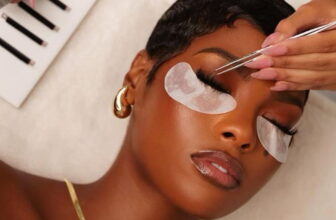Teenage Acne: It’s Not Just About Hormones
Are you a teenager who suffers from acne? You are not alone. Acne is one of the most common skin conditions that affects teenagers, and it can be a frustrating and embarrassing experience. But did you know that hormones are not the only culprit behind teenage acne?
While hormonal changes during puberty do play a significant role in causing acne, there are other factors at play as well. In this article, we will explore the various causes of teenage acne and offer some tips on how to manage and treat it.
Understanding Acne
To understand acne, we need to first look at our skin. Our skin has pores that are connected to oil glands located beneath the skin’s surface. These glands produce an oily substance called sebum, which helps keep our skin moisturized and protected.
Sometimes, these glands can produce too much sebum, causing it to mix with dead skin cells and clog the pores. This creates an ideal environment for bacteria to grow, leading to inflammation and the formation of acne.
Underlying Causes of Teenage Acne
As we mentioned earlier, hormonal changes during puberty can cause an increase in sebum production, leading to acne. However, genetics also play a role in determining who is more prone to developing acne.
Other factors that can contribute to teenage acne include:
- Diet: Consuming too much processed and high-sugar foods can trigger hormone fluctuations and worsen existing acne. Consuming a balanced diet with plenty of fruits and vegetables can help keep acne under control.
- Stress: Teenagers are often under a lot of stress, whether it’s from school, relationships, or other personal issues. Stress can cause an increase in hormone levels, leading to acne flare-ups.
- Skincare products: Using heavy or oily skincare products can clog pores and worsen acne. It’s essential to choose non-comedogenic products that won’t clog pores.
Treating Teenage Acne
If you are struggling with teenage acne, don’t worry; there are several ways to manage and treat it. Here are some tips:
- Cleanse your skin: Wash your face twice a day with a gentle cleanser to remove excess oil, dirt, and bacteria. Avoid scrubbing too hard, as it can irritate the skin.
- Keep your hands off your face: Touching or picking at acne can worsen inflammation and spread bacteria.
- Don’t overuse products: While skincare products are essential, using too many harsh products can dry out your skin and trigger more oil production. Stick to a simple routine with gentle products.
- See a dermatologist: If your acne is severe and not responding to over-the-counter treatments, it’s best to see a dermatologist. They can prescribe medication or suggest other treatment options like chemical peels or laser therapy.
Finding the Right Dermatologist
If you’re looking for a dermatologist in Salt Lake City, you’re in luck. Many qualified and experienced dermatologists in the area can help you manage your teenage acne. Here are some tips to find the right one:
- Check their credentials: Look for a board-certified dermatologist with experience treating teenage acne.
- Read reviews: Check online reviews from previous patients to get an idea of their experience and satisfaction with the dermatologist.
- Ask for recommendations: Ask your friends, family, or healthcare provider for recommendations. They may know of a good dermatologist in your area.
Teenage acne can be frustrating and challenging to deal with, but it’s essential to remember that it’s not just about hormones. Understanding the underlying causes and taking proper care of your skin can help manage and treat acne effectively. And remember, if over-the-counter treatments are not working, don’t hesitate to seek professional advice from a dermatologist. With the right treatment plan, you can achieve clear and healthy skin.
Do you have any tips for managing teenage acne? Share them in the comments below! Let’s help each other on this journey to clear skin.
Photo by Freepik






